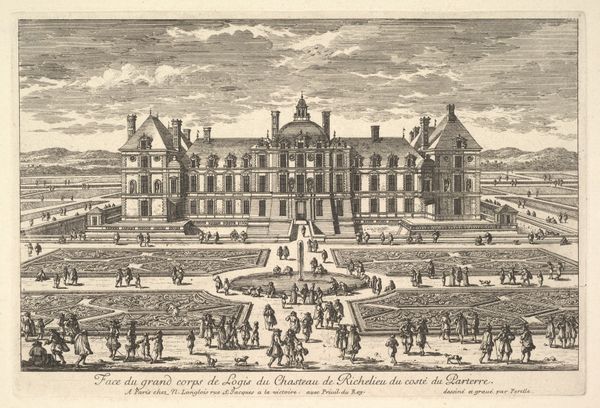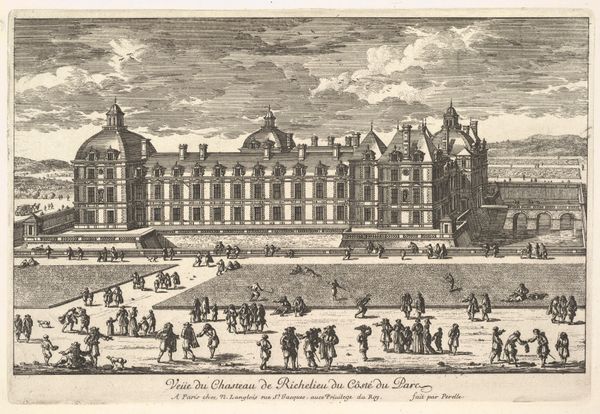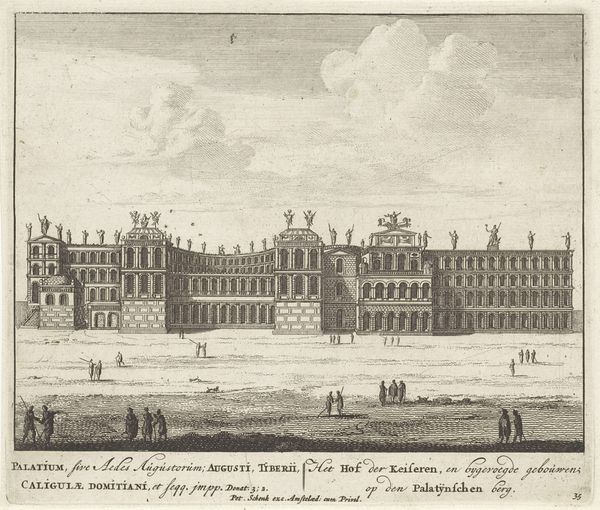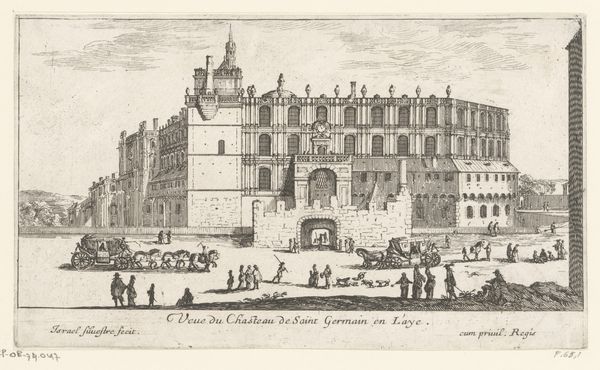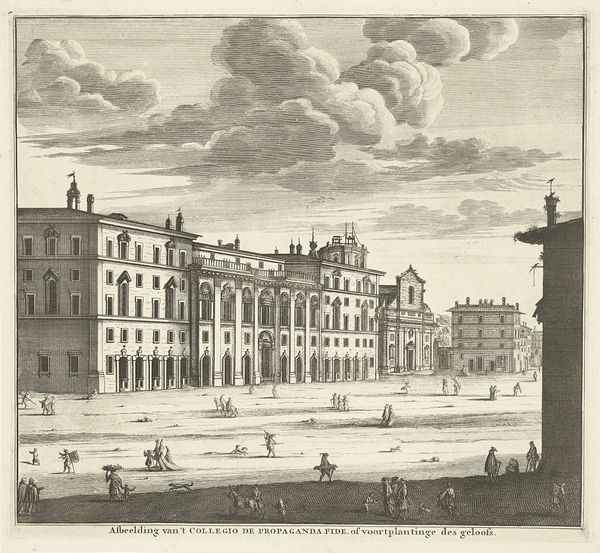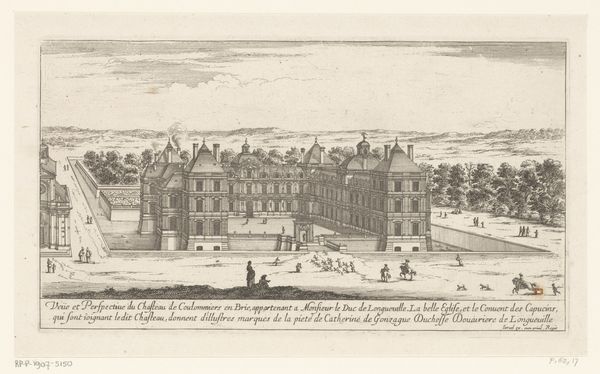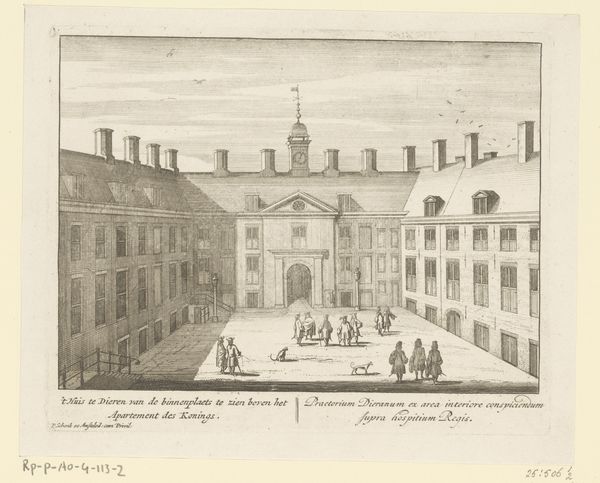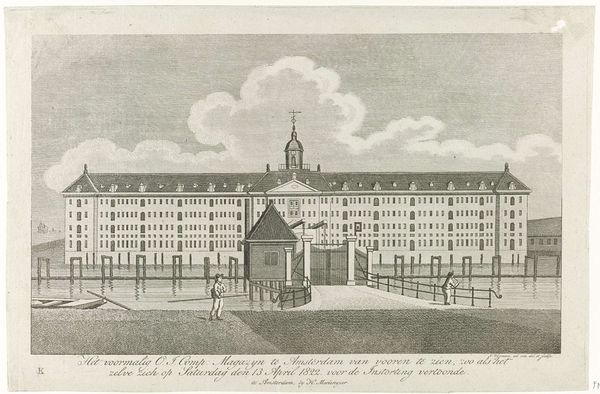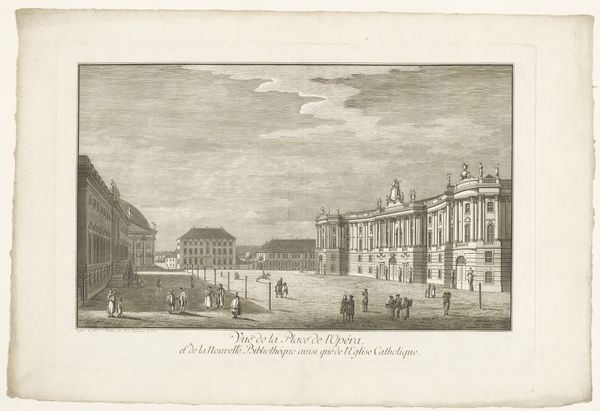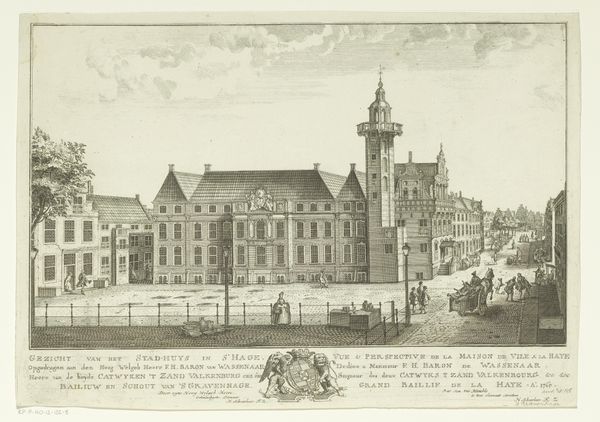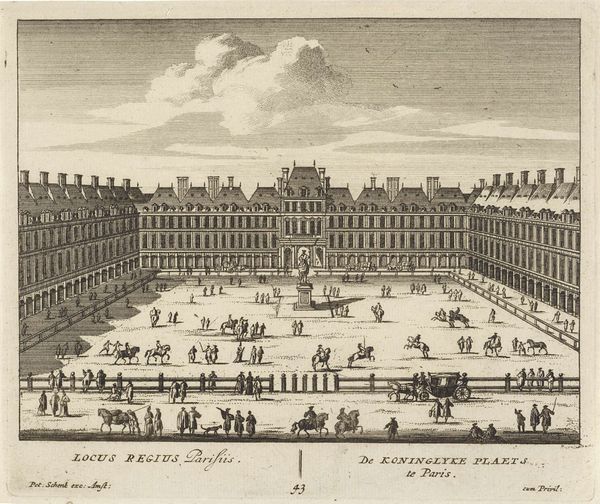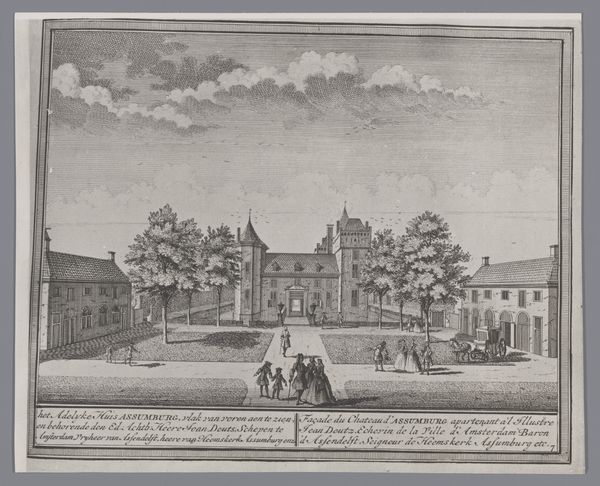
drawing, print, ink, engraving, architecture
#
drawing
#
baroque
# print
#
ink
#
cityscape
#
engraving
#
architecture
Dimensions: height 170 mm, width 202 mm
Copyright: Rijks Museum: Open Domain
Curator: This ink and engraving print from the late 17th century offers a partial view of the Louvre's facade. Though anonymous, it provides insight into the Palace during that era. What are your initial impressions? Editor: It feels intensely formal, almost rigid in its presentation. The meticulous detail conveys a sense of controlled power, doesn't it? And the sky above seems almost blank, adding to that severe effect. Curator: Indeed. The architectural rendering adheres to strict principles of proportion and perspective. Observe the rhythmic repetition of windows and the calculated symmetry. It projects an image of stability and absolute authority, a visual manifestation of the Baroque era’s ideals. Editor: And consider the people populating the foreground—figures on horseback and others in what appear to be elaborate social exchanges. The artist captures a clear hierarchy here: The architecture embodies permanence, while the people represent the fleeting theater of court life. Carriages await like props. Curator: Precisely. The figures serve less as individual portraits and more as symbols of the court's activity and prestige. Their relative size to the imposing facade emphasizes the dominance of the institution itself. There is also a sense of staging: Notice how the buildings recede into space, leading the eye toward a vanishing point at the horizon. Editor: That receding view almost swallows them up, despite all their finery. But those plumes of smoke rising from the chimneys speak to a concealed inner life—hints of domesticity tucked away within the palace walls. It reminds us of the lived experience embedded within even the grandest of symbolic structures. Curator: A potent reminder. Ultimately, the artwork balances a calculated aesthetic order with understated allusions to human activity. A demonstration of power tempered by the intimate moments of daily life within. Editor: It shows how even depictions of the most imposing buildings can speak volumes about the cultures and societies that constructed and inhabited them. The facade isn't just stone; it's a statement.
Comments
No comments
Be the first to comment and join the conversation on the ultimate creative platform.
